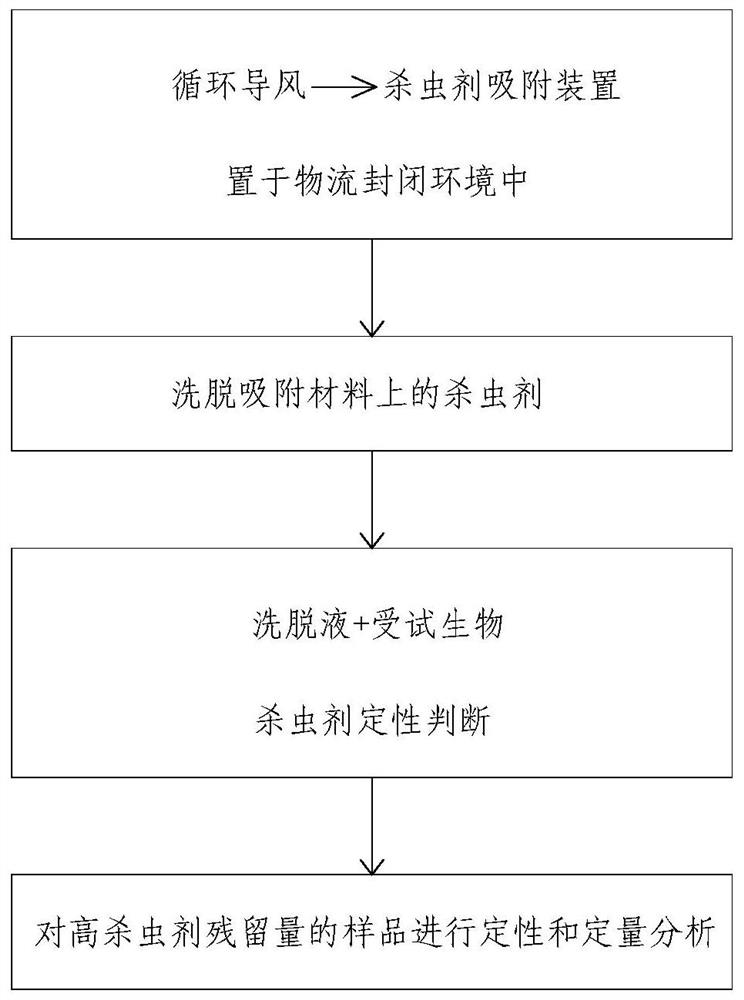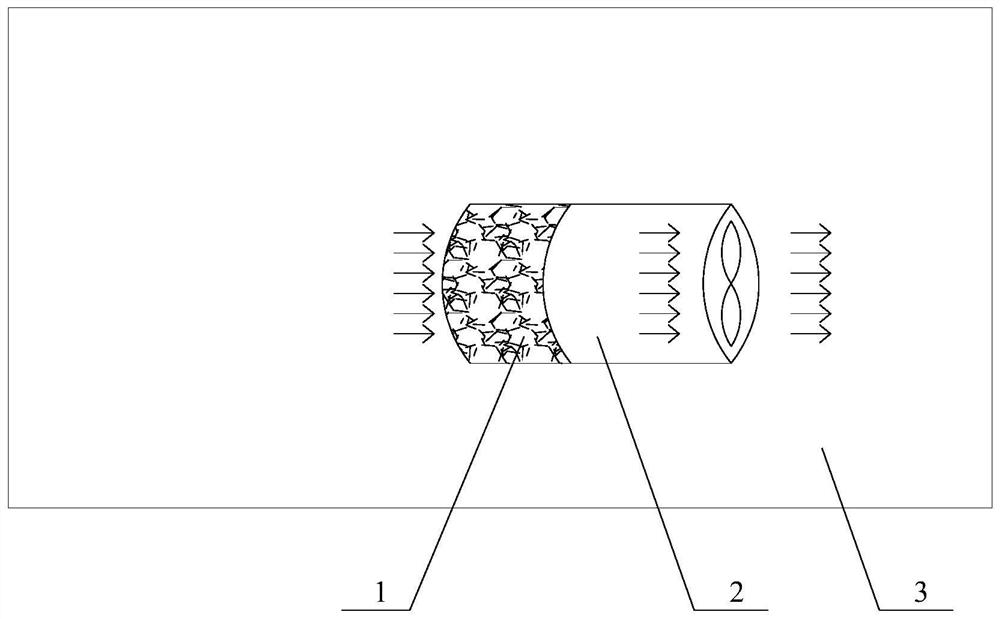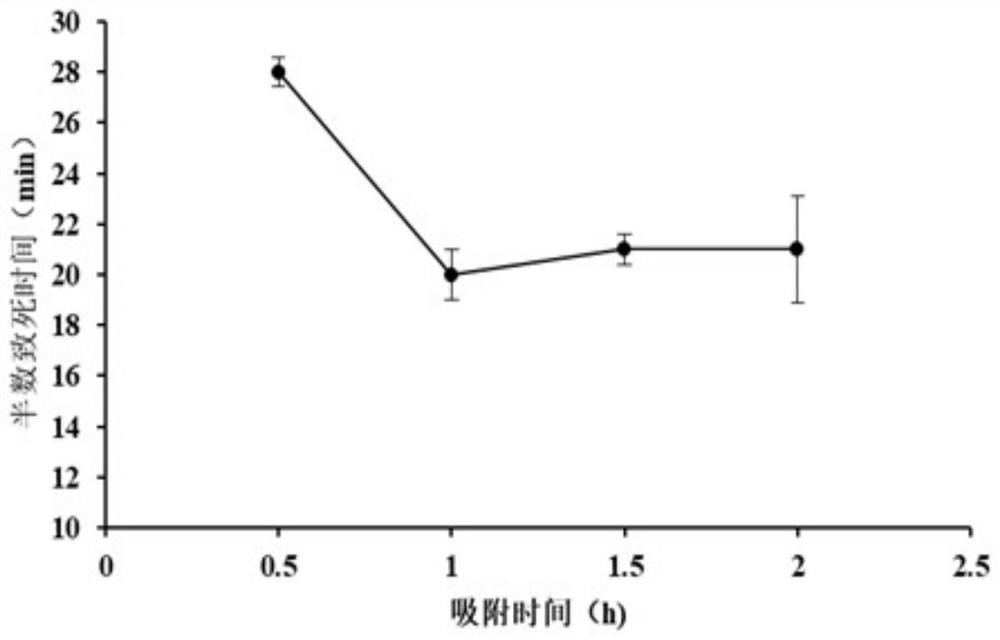A detection method for residual pesticides in closed environment of agricultural product logistics
A closed environment and detection method technology, applied in the direction of biological testing, measuring devices, material inspection products, etc., to achieve the effect of simple cultivation, simple operation, and easy acquisition
- Summary
- Abstract
- Description
- Claims
- Application Information
AI Technical Summary
Problems solved by technology
Method used
Image
Examples
Embodiment 1
[0048] Embodiment 1 of the present invention provides a method for detecting residual pesticides in a closed environment of agricultural product logistics, such as figure 1 As shown, it specifically includes the following steps:
[0049] S1. Incubation of brine shrimp eggs: Weigh 1g brine shrimp eggs (shrimp eggs are kept in a refrigerator at 4°C, take out the refrigerator before incubation, and return to room temperature, about 2-3h), place them in a gas-filled incubator, and add In 250ml of homemade seawater, incubate with aeration for 24-30h under light conditions; in order to reduce the diversity of organisms and ensure the uniformity of the test, generally use brine shrimp larvae with an incubation time of 26-28 hours as the test object.
[0050] S2. The poison test of brine shrimp: use common pesticides on the market as poison reagents, such as phoxim, profenofos, beta-cypermethrin, beta-deltamethrin, beta-half-cyhalothrin, acetamiprid, Thiamethoxam, imidacloprid, and chlorfe...
Embodiment 2
[0074] Embodiment 2 of the present invention provides a rapid qualitative detection method for residual pesticides in a closed environment of agricultural product logistics, which specifically includes the following steps:
[0075] S1. Incubation of brine shrimp eggs, weigh 1g brine shrimp eggs (shrimp eggs are kept in a refrigerator at 4℃, take out the refrigerator before incubation, return to room temperature, about 2-3h), put it in the aerated hatching device, add Incubate in 250ml of homemade seawater for 26h with aeration under light conditions.
[0076] S2. Place the adsorbent in the adsorption filtering device.
[0077] S3. Seal the device containing the adsorption material in an environment;
[0078] S4. After circulating filtration for 30 minutes in the ambient air of fruit and vegetable storage and transportation; then, the adsorbent is eluted, and 200 μL of the eluate is added to a 24-well plate, and then the hatched brine shrimp culture solution in step 1 is added 50μL;
...
PUM
| Property | Measurement | Unit |
|---|---|---|
| recovery rate | aaaaa | aaaaa |
Abstract
Description
Claims
Application Information
 Login to View More
Login to View More - R&D
- Intellectual Property
- Life Sciences
- Materials
- Tech Scout
- Unparalleled Data Quality
- Higher Quality Content
- 60% Fewer Hallucinations
Browse by: Latest US Patents, China's latest patents, Technical Efficacy Thesaurus, Application Domain, Technology Topic, Popular Technical Reports.
© 2025 PatSnap. All rights reserved.Legal|Privacy policy|Modern Slavery Act Transparency Statement|Sitemap|About US| Contact US: help@patsnap.com



